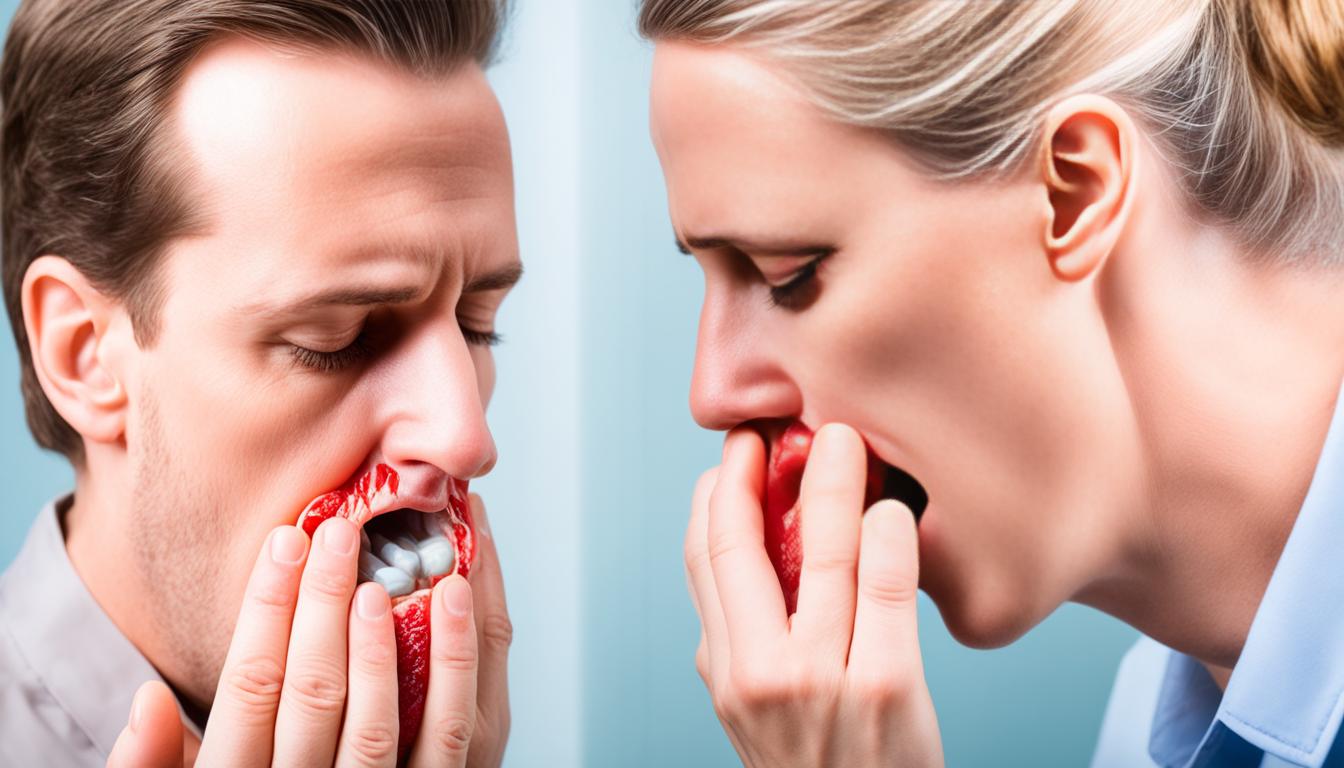Dysphagia is when someone has a hard time swallowing. It can be due to many things like issues in the body’s shape, problems with nerves, or muscles that are not strong enough. Studies suggest that between 10% to 22% of people over 50 in the U.S. deal with dysphagia. They might feel pain swallowing, have the sensation of food being blocked, vomit food, or lose weight.
Doctors have a few ways to help with dysphagia. They might suggest doing special exercises for the throat muscles, changing what you eat, or even having surgery. Lately, using stem cells to treat dysphagia has become a hot topic. This method aims to fix the tissues that have been damaged, making it easier to swallow again.
Key Takeaways:
- Dysphagia makes it hard for people to swallow.
- The condition can cause pain, the feeling of being blocked, vomiting, and weight loss.
- Treatments include physical therapy for swallowing, diet changes, and sometimes surgery.
- Using stem cells to repair the throat shows exciting potential for improving swallowing.
Prevalence and Causes of Dysphagia
Dysphagia is a common condition that affects many adults in the United States. It impacts between 10% and 22% of the population. Various factors, like body shape problems, brain issues, and muscle conditions, can lead to dysphagia.
Anatomical Abnormalities
Issues in body structure, like Zenker diverticulum and esophageal strictures, can make swallowing hard. Zenker diverticulum is a pocket that forms in the throat. Esophageal strictures are narrowings in the throat, making food movement tough.
Neurological Disorders
Brain and nerve problems caused by things like stroke and Parkinson’s disease can also bring about dysphagia. These diseases impact the nerves and muscles used in swallowing, making it hard to move food and liquids from the mouth to the stomach.
Muscular Conditions
Conditions that affect the muscles, such as myasthenia gravis and polymyositis, can lead to dysphagia too. They make the muscles used for swallowing weaker. This weakness can make moving food down the throat difficult.
Getting older, having head and neck cancer, and being on certain medications are also linked to dysphagia. It’s key to find out why someone has dysphagia for the right treatment plan.
Next, we’ll look at how doctors diagnose and treat dysphagia. We aim to give you a full picture of this condition and its treatments.
Diagnosis and Management of Dysphagia
To diagnose dysphagia, doctors study a person’s medical past and do a check-up. They might use tests like video studies of swallowing and look inside with special tools. These tests help find out what’s causing the difficulty in swallowing and how bad it is.
Diagnostic Tests for Dysphagia
A videofluoroscopic swallowing study uses X-rays to watch how food moves through the throat. This test can show if there’s anything wrong in the throat that’s making it hard to swallow. It’s very useful in understanding the problem.
Endoscopic evaluations involve a camera on a flexible tube that’s passed into the throat. Doctors can see any issues directly, like narrowings or bad muscles. This test helps spot physical problems causing dysphagia.
Management of Dysphagia
Speech therapists are key in treating dysphagia. They create care plans to boost swallowing and life quality. Plans include actions, muscle strengthening exercises, and adjusting food.
Exercises aim to make swallowing easier. They work on muscles and coordination. This can enhance how well someone swallows.
Changing what a person eats is also important. Therapists pick foods and drinks that are safe and meet nutritional needs. This prevents problems like choking.
If all else fails, surgery might be needed. It can fix physical blockages or change the throat’s shape. But surgery is only done if other treatments don’t work.
Helping someone with dysphagia involves a team of different experts working together. It aims to make swallowing better and life more fulfilling for the patient.
Stem Cell Therapy for Dysphagia
Studies are promising about stem cell therapy for dysphagia. In tests with animals, injecting certain stem cells helped. For example, it improved voice problems and tongue damage. It also helped heal glands that were hurt by radiation.
Now, there are tests with real people that look safe and helpful. This kind of therapy might be a new way to treat dysphagia. It could fix harm in the body and make it easier to swallow. For many, this could mean a big improvement in their daily life.
More work is needed, but stem cell therapy could change how we treat dysphagia. Scientists are still learning how it works best. As we discover more, this therapy could become an option for those who didn’t find help with the usual treatments. It offers hope for new and effective ways to deal with swallowing issues.

